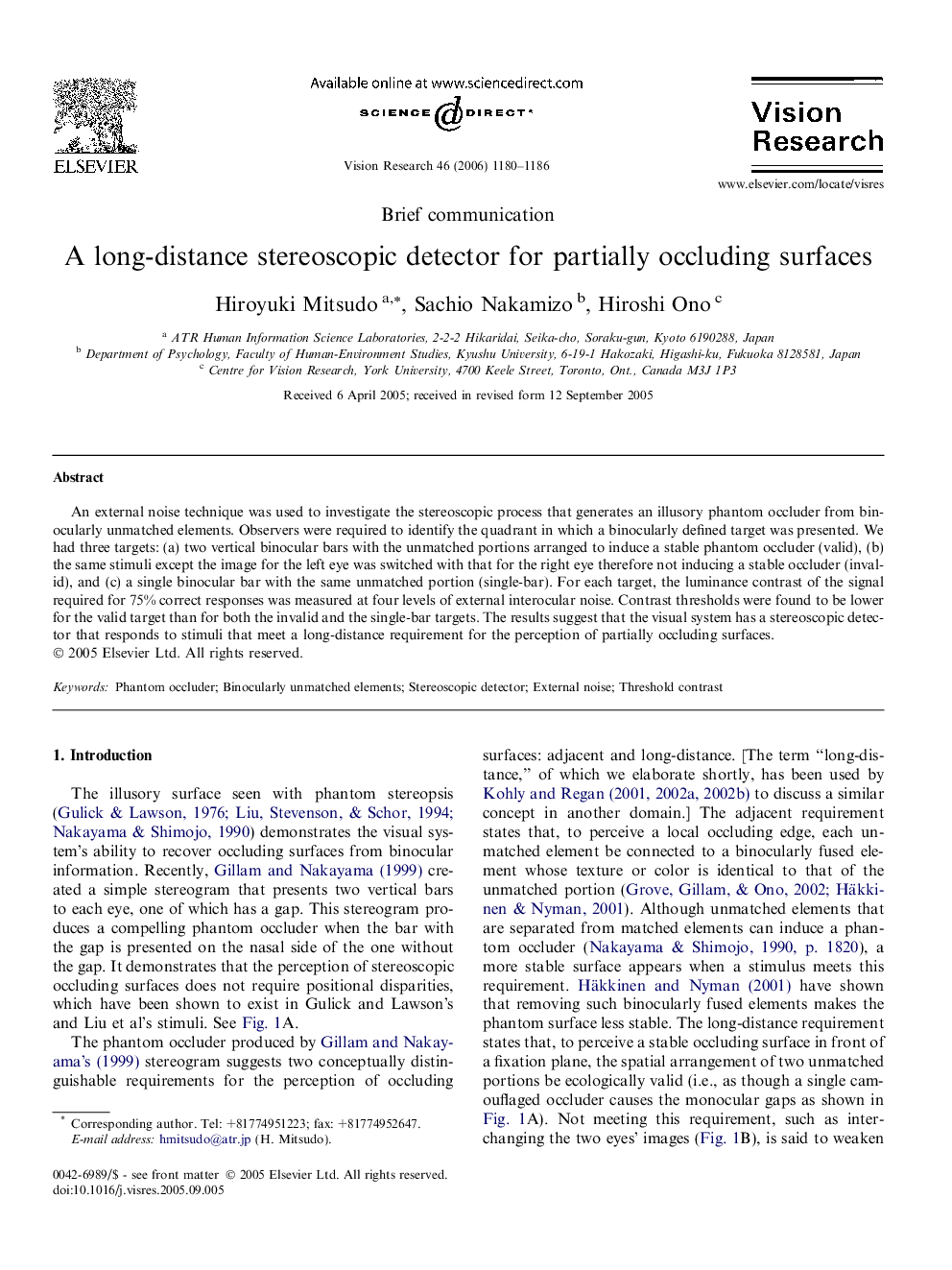| Article ID | Journal | Published Year | Pages | File Type |
|---|---|---|---|---|
| 4035290 | Vision Research | 2006 | 7 Pages |
An external noise technique was used to investigate the stereoscopic process that generates an illusory phantom occluder from binocularly unmatched elements. Observers were required to identify the quadrant in which a binocularly defined target was presented. We had three targets: (a) two vertical binocular bars with the unmatched portions arranged to induce a stable phantom occluder (valid), (b) the same stimuli except the image for the left eye was switched with that for the right eye therefore not inducing a stable occluder (invalid), and (c) a single binocular bar with the same unmatched portion (single-bar). For each target, the luminance contrast of the signal required for 75% correct responses was measured at four levels of external interocular noise. Contrast thresholds were found to be lower for the valid target than for both the invalid and the single-bar targets. The results suggest that the visual system has a stereoscopic detector that responds to stimuli that meet a long-distance requirement for the perception of partially occluding surfaces.
